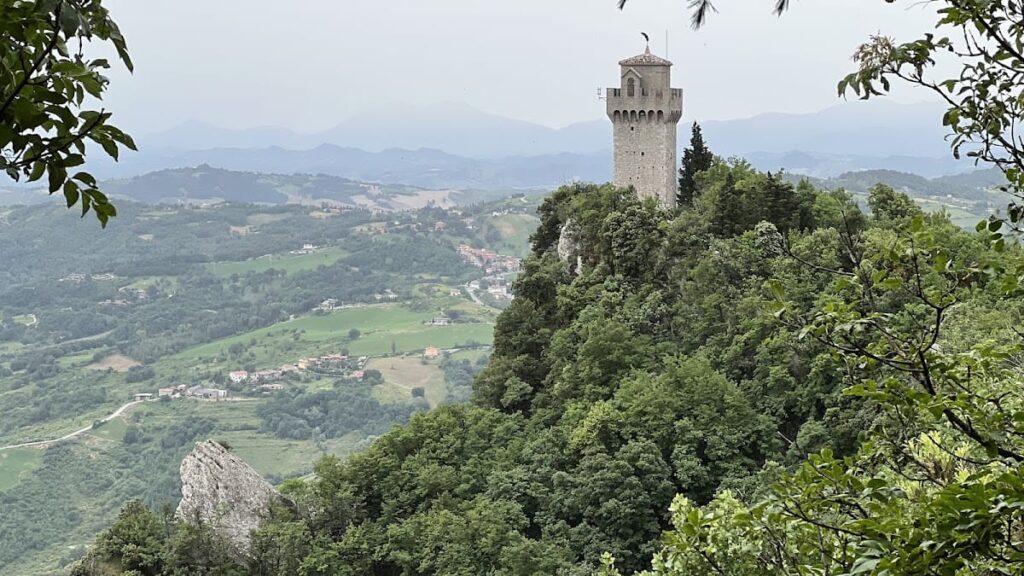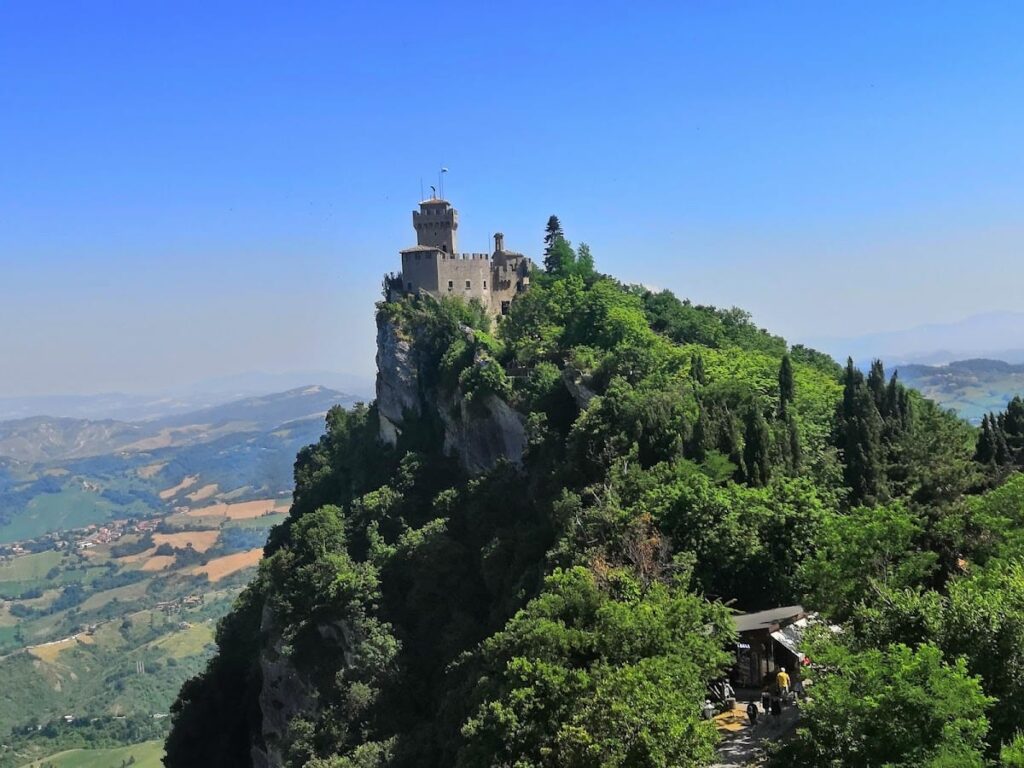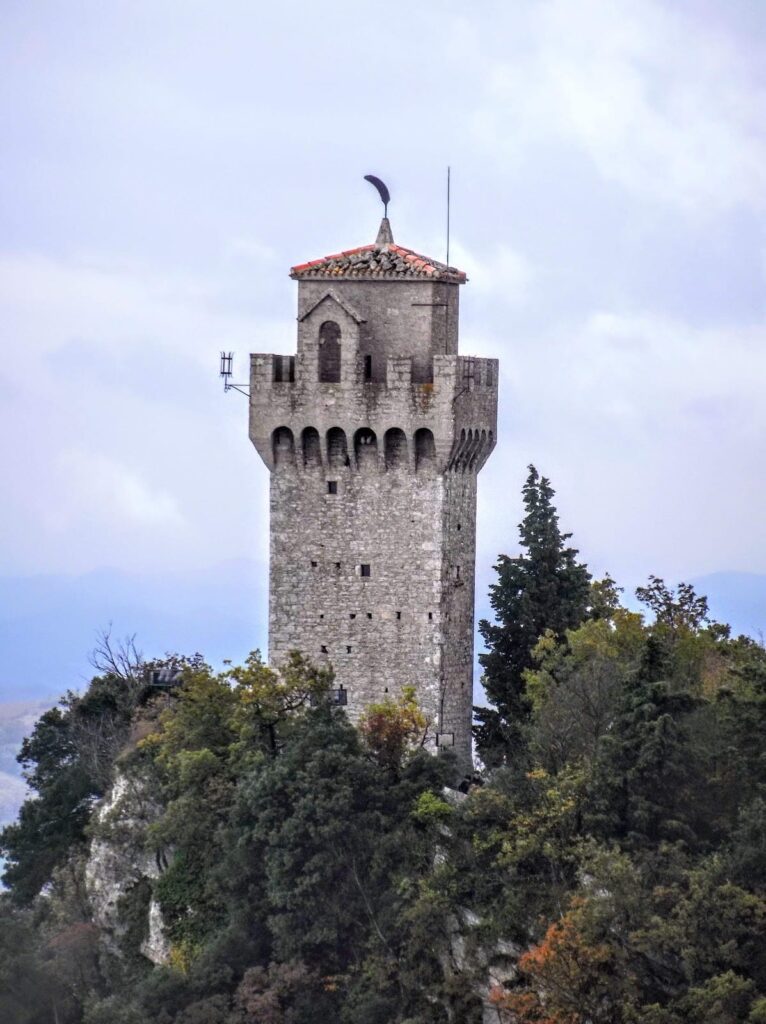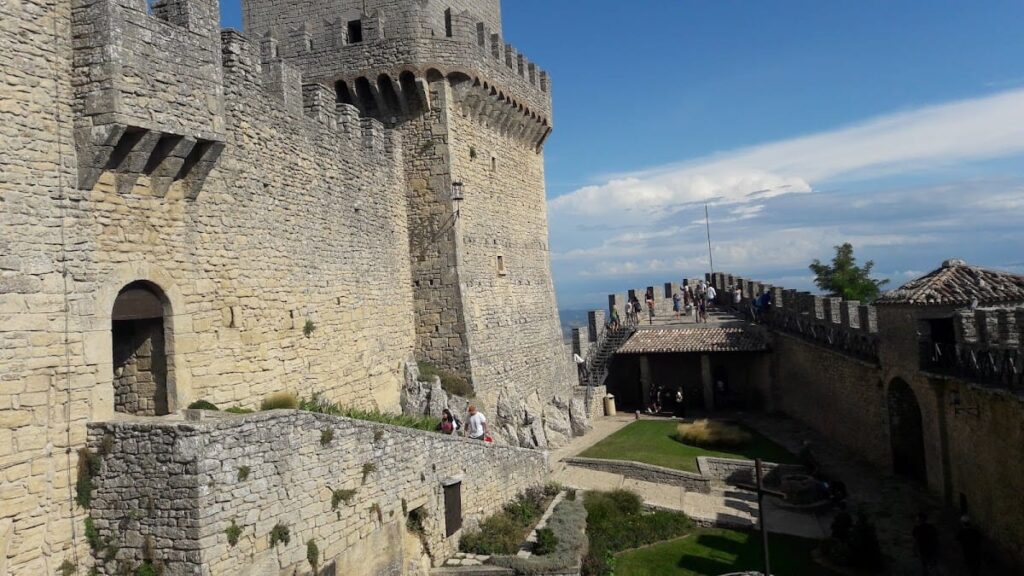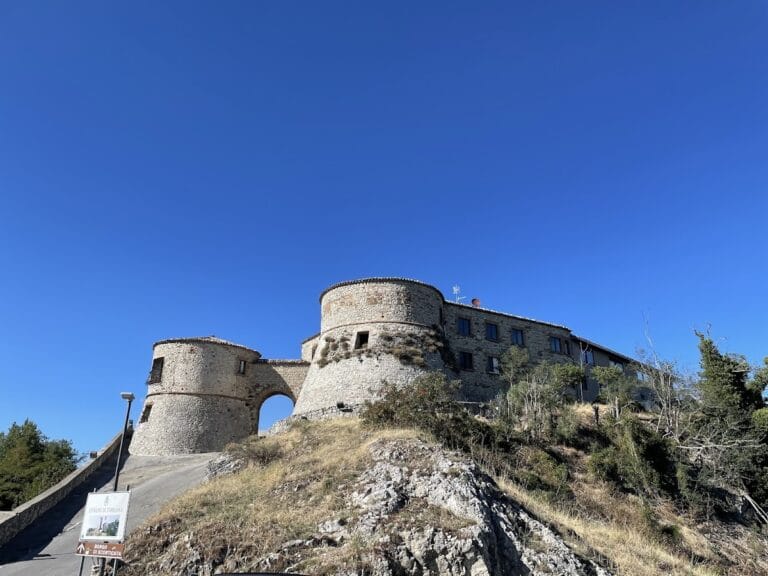Three Towers of San Marino: Historic Fortifications on Mount Titano
Visitor Information
Google Rating: 4.6
Popularity: Medium
Google Maps: View on Google Maps
Country: San Marino
Civilization: Medieval European
Remains: Military
History
The Three Towers of San Marino stand on the three peaks of Mount Titano, located between the city of San Marino and Borgo Maggiore. These fortresses were built by the people of the Republic of San Marino as defensive structures to protect their territory. The oldest and largest tower, Guaita, was constructed in the 11th century to serve as a refuge and stronghold for the local population during times of conflict.
By the mid-13th century, the second tower, Cesta, was first recorded in 1253. It was built atop the remains of Roman fortifications and later fortified with an outer wall in 1320. Cesta remained an active defensive site until the late 1500s. In the 20th century, it was repurposed to house a museum dedicated to ancient weapons, reflecting its martial heritage.
Montale, the smallest tower, was erected in the 14th century on the southern peak of Mount Titano, replacing earlier fortifications. It functioned mainly as a lookout against threats from the south until 1479. After losing its strategic role, Montale was abandoned but later restored in the 18th and 20th centuries. Unlike the other towers, it has never been opened to the public.
Throughout their history, the towers played key roles in defending the republic, including during conflicts with the Malatesta family. Guaita also served as a prison from the late 1700s until 1970, holding inmates for short sentences. Montale contained a deep prison cell accessible only from above, indicating its use as a jail. The towers have become enduring symbols of San Marino, appearing on the national emblem, flag, and euro coins.
Remains
The Three Towers form a linked defensive system atop Mount Titano’s three peaks, constructed primarily from stone. Guaita, the northernmost tower, features two concentric stone walls. The inner wall once had corner watchtowers, destroyed in the 16th century, enclosing a bell tower, a pentagonal watchtower, and guard quarters. Its entrance gate, dating to the early 15th century, includes a drawbridge typical of that era. The central courtyard contains several cannons donated in 1907 by King Victor Emmanuel III of Italy, once used for ceremonial firing. A chapel dedicated to Saint Barbara was added beside the southern tower in 1960. Guaita’s bell tower, likely built in the mid-1500s, served as a warning system and still rings on religious and national holidays.
Cesta sits at the highest point of Mount Titano, 755 meters above sea level. It is surrounded by a high outer wall connected to the defensive walls linking all three towers. The tower houses the Museo delle Armi Antiche, which contains about 700 weapons dating from the 13th century to modern times. Cesta underwent significant restoration in 1924–1925 to prevent deterioration, preserving its stone construction and medieval character.
Montale, located on the southern peak, has a narrow silhouette and a single entrance door positioned about seven meters above ground level, consistent with prison architecture of its time. Beneath the tower lies a deep prison cell known as the “fondo della torre,” accessible only from above and situated eight meters underground. Montale was restored in the 18th and 20th centuries but remains closed to the public.
All three towers have been carefully maintained to preserve their original defensive features. Their arrangement on Mount Titano creates a continuous line of fortifications that historically protected the capital and its surroundings.
